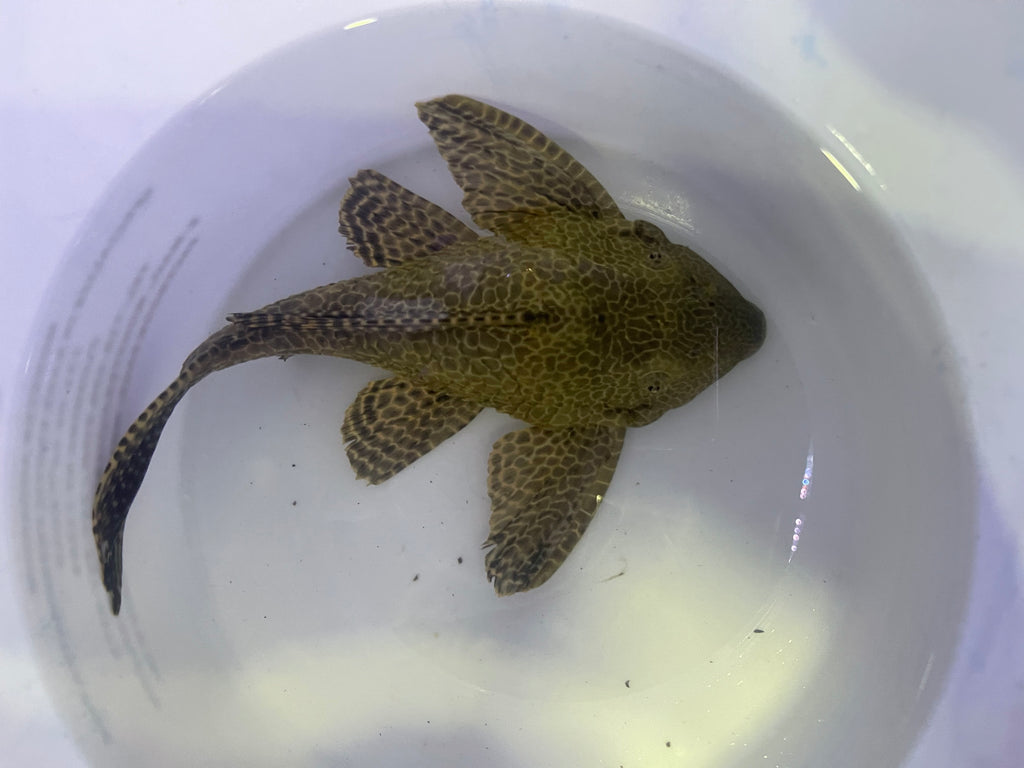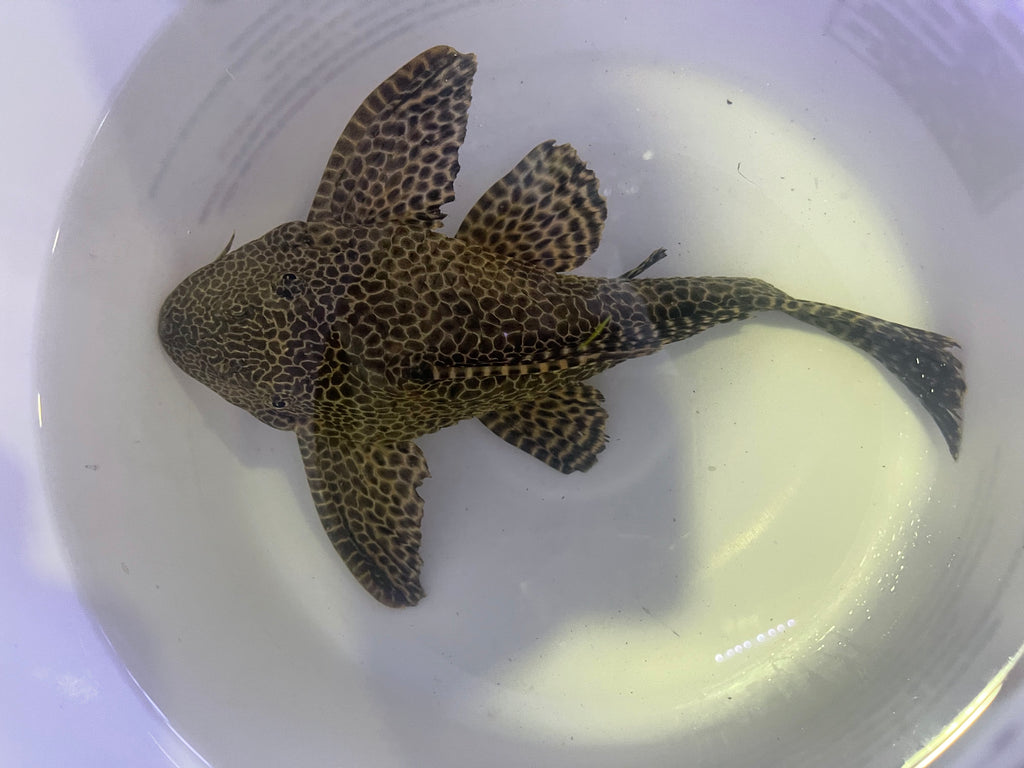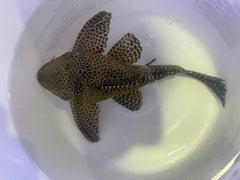The Pterygoplichthys gibbiceps, also known as the Gibbiceps Pleco or Leopard Sailfin Catfish, is an armored catfish species native to Brazil, Ecuador, Peru, and Venezuela. It is commonly found in the Orinoco and Amazon basins.
This species exhibits typical characteristics of the Pterygoplichthys genus, including a large dorsal fin with more than nine rays, prominent nasal flares, and a noticeable hump or crest anterior to the dorsal fin. Adult fish can grow up to 50.0 centimeters (19.7 inches) in total length and have a lifespan exceeding 20 years.
The Gibbiceps Pleco has a typical pleco body shape, with its patternation consisting of irregular, large brown spots on a yellowish background, creating a honeycombed appearance. As the fish grows, the spots tend to become smaller. Although primarily herbivorous like most plecos, they will also consume dead animals.
In their natural habitat, these fish are typically found in shoals in slow-moving rivers of the Amazon and Orinoco systems. They also occupy flooded areas during the wet season. During the dry season, P. gibbiceps aestivates by residing in burrows, approximately 1 meter long, dug into mud banks along the river. It is believed that egg rearing also occurs in these burrows.
The species name, gibbiceps, is derived from the Latin words "gibbus" meaning hump and "caput" meaning head, referring to the prominent ridge on their body. Common names for this species include "gibbys," "leopard sailfin catfish," and "clown plecs" due to the juveniles' amusing appearance characterized by their large and distinct spots.
It is worth noting that Ancistrus gibbiceps and Glyptoperichthys gibbiceps are synonyms of P. gibbiceps. Additionally, this fish has been recently discovered in the Ganges River in Banaras, India, raising concerns about its potential inclusion in the list of invasive exotic fish species in the region.




